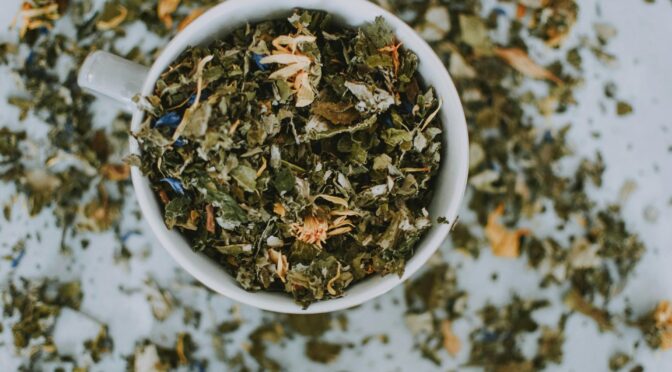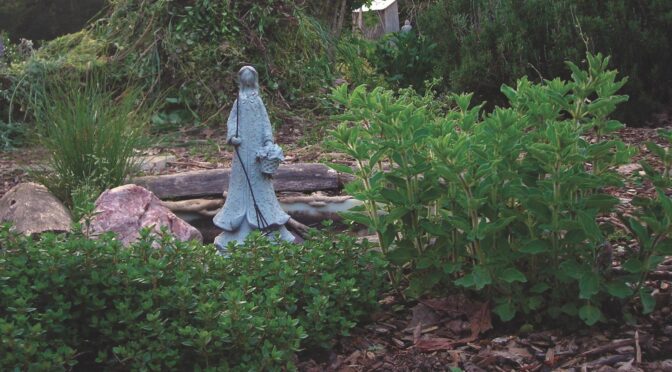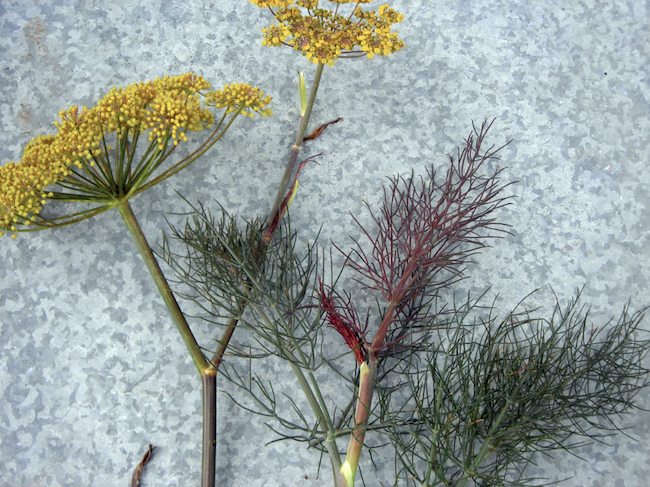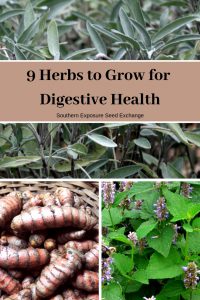One of the best parts of gardening is enjoying your harvest. One of my favorite ways to use my garden’s edible flowers and herbs is to dry and mix herbal teas. These teas are tasty, beautiful, and fun to make. They can also be nourishing and helpful in supporting the system with minor issues like nausea, sleeplessness, colds, and stress. Here’s how you can get started making your own herbal teas too.
What Should I Put in My Tea?
You may have grown many great tea ingredients in your garden this year. Some of these herbs are usually grown for medicinal purposes, while others are often included in culinary herb gardens and ornamental flower beds.
If you’ve never made herbal tea, it’s a little more complex than just picking plants. Different herbs have different valuable parts. For example, we may use one plant’s roots while focusing on another’s aerial parts (leaves, flowers, and stems).
Here are some of the common tea herbs you may be growing and what part to harvest:
- Anise-Hyssop (leaves)
- Ashwagandha (roots)
- Calendula (flowers)
- Catnip (leaves)
- Chamomile (flowers)
- Echinacea (whole plant including roots)
- Feverfew (aerial parts)
- Ginger (rhizome)
- Lavender (Flowerbuds)
- Lemon Balm (leaves)
- Mint (leaves)
- Monarda (aerial parts)
- Rose (hips and petals)
- Roselle (calyxes)
- Skullcap (aerial parts)
- Valerian (roots)
Additionally, you may have some fun tea ingredients on hand or can easily pick up at a grocery store. These include:
- Black Tea
- Cardamom
- Cinnamon Sticks
- Fennel Seeds
- Green Tea
- Lemon Peels
- Nutmeg
- Orange Peels
- Vanilla Beans
If you’re outdoorsy, you may also want to forage for some tea ingredients! Just make sure you are 100% confident in your identification. Also, avoid harvesting plants from areas that could be contaminated.
- Elderberries
- Chicory
- Clover
- Ground Ivy
- Nettles
- Pine Needles
- Raspberry Leaves
- Spruce Tips

How To Process Tea Ingredients
You can use ingredients fresh from the garden, but if you want to make larger batches of tea blends to keep on hand or enjoy tea out of season, you’ll need to preserve your herbs.
You can air-dry many herbs, like mint and lavender. To do so, you’ll need a spot with good airflow out of direct sunlight. Mint and many other herbs will dry when hung upside down in bundles from the ceiling of a kitchen or porch. Avoid hanging them in areas where they may be hit with water or steam, like over the stove.
You can also lay the herbs in a single layer on an old window screen or similar material that allows good airflow around them.
However, in our humid climate, it’s much tougher to air-dry fleshier herbs like roselle calyxes and roots and rhizomes like ginger, echinacea, and valerian. We generally recommend cutting them into small pieces and drying them in a dehydrator.
How to Design a Herbal Tea Blend
To get started, it’s essential to think about why you want to make your tea. Are you trying to make a citrusy blend that’s tasty to drink iced in the garden? Do you want to make a soothing blend to drink before bed or an energizing blend for the morning?
Once I have a good idea of my goal, I start with the Herbal Academy’s basic recommendation. Generally, they advise including:
- 3 parts base ingredient
- 1-2 parts supporting ingredients
- 1/4-1 part accent ingredient
This guideline is just a starting point. Start just making a batch that will make a cup or two and then change the ingredients as needed.
For most recipes, I’ve found that a tablespoon of tea makes one 8-ounce cup of tea when steeped for 5 to 15 minutes. However, you can use more or less depending on how strong you enjoy your tea.
Example Herbal Tea Blends to Try
If you’re unsure where to start, here are a couple of basic blends I enjoy. You can start with these and adjust or change ingredients based on your needs and taste.
Sleepy Tea
It is a calming tea to drink before bedtime or when you’re trying to relax.
- 1 cup chamomile flowers
- 1/2 cup catnip leaves
- 1/4 cup lavender blossoms
Stomach Calming Tea
This tea is helpful for indigestion, nausea, and car sickness.
- 1 cup mint leaves
- 1/2 cup chamomile
- 2 TBS ginger
- 1 TBS fennel seeds
Cold Support Tea
- 1 cup echinacea
- 1/2 cup monarda
- 1/4 cup orange peels
- 1/4 cup rosehips
If you have beautiful herbs coming in from the garden, it’s tea time! You can dry your own herbs and create tasty, nourishing tea blends. What’s your favorite herbal tea blend?





